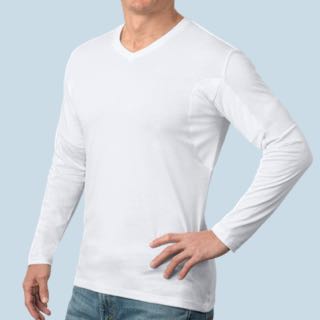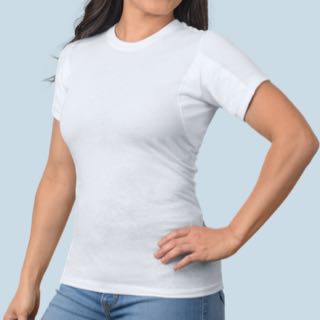Anxiety Sweating Explained: Causes, Symptoms & Treatment
Anxiety and sweating often go hand in hand, creating a frustrating cycle that's hard to break. Anxiety sweating, unlike heat or exercise-induced perspiration, can strike in cool environments and at inconvenient times, triggered by stress rather than physical exertion. If you’ve ever felt sweat start to pour before a presentation or a first date, you’re not alone. Understanding what causes anxiety sweat and how to manage it can help you stay cool—literally and figuratively—even under pressure.
What Is Anxiety Sweating?
Anxiety sweating is a form of stress-induced hyperhidrosis, excessive sweating triggered by emotional or psychological stress. It occurs when your nervous system disproportionately responds to stressful situations. But there’s the problem: If you live with anxiety, seemingly ordinary situations can trigger this intense physical response.
And, unlike regular sweating from a hot day or exercise, anxiety sweating can strike anywhere—even in a cool conference room before an important meeting.
Read more: Stress Sweat: What It Is and How to Stop It
Causes of Anxiety Sweating
When you're nervous, your body activates its stress response, increasing nervous system activity and driving adrenaline through your system. This triggers your sweat glands to produce moisture. It’s part of the classic fight-or-flight response.
Of course, you know you don’t need a fight-or-flight response when your boss asks you for a quarterly report, but your body can’t tell the difference between that and a saber-toothed tiger chasing you. Your stress hormones were simply designed to alert you to danger, heightening your senses to react quickly. In today’s daily life, your brain can interpret many different scenarios as being dangerous due to the fact that they cause anxiety.
But why all the sweat?
During nervous or anxious moments, your heart beats faster and your breathing quickens. These shifts increase your body temperature, triggering sweating to try and cool you down.
Symptoms of Anxiety Sweating
If you notice these signs and symptoms, you’re likely dealing with anxiety sweating:
- Excessive sweating or spending the bulk of your day dealing with sweat
- Excessive body odor (caused by bacteria mixing with sweat particles on your skin)
- Skin that feels soft or spongy and peels easily
- Constantly irritated and infected skin
- Sweating subsides during sleep
- Emotional distress related to sweating
While sweaty palms are a common anxiety symptom, it can occur in other areas, too. Most commonly, this condition strikes where you have the most sweat glands: your palms, armpits, feet, face, genitals and lower back.
Tips to Manage Anxiety Sweating in the Moment
While you can’t always stop anxiety and sweating before they happen, several strategies can help you regain control (and confidence) during stressful moments.
Wearing Sweat-Resistant Clothing
First dates are inherently nerve-wracking, and the last thing you want to be worried about is sweating through your T-shirt. Your first line of defense against visible sweat marks is choosing the right clothing:
- Opt for breathable fabrics that allow air circulation
- Wear natural, moisture-wicking fiber blends featuring cotton or rayon
- Stick to dark colors to help camouflage perspiration
Specialized underclothes like Thompson Tee sweat proof undershirts also offer a reliable solution for those moments when your nerves can’t seem to take a hint.
Armed with Hydro-Shield® technology, Thompson Tee undershirts completely absorb underarm sweat and prevent it from showing through your outer clothing. The specialized, breathable material in the underarm barrier keeps you looking completely dry, even when anxiety strikes.
Using Clinical or Prescription Strength Anti-Perspirant
If you’ve noticed that your anxiety sweat is especially pungent, regular deodorants likely won’t cut it. Fortunately, clinical-strength antiperspirants contain higher concentrations of active ingredients, like aluminum chloride, to block sweat ducts more effectively and keep your pits smelling fresh.
For severe cases, your doctor can prescribe stronger formulations containing up to 30% aluminum chloride hexahydrate. While these prescription formulas provide more powerful protection, they can also irritate the skin, so it’s generally recommended you try over-the-counter options first.
Timing also matters with your antiperspirant. Apply your antiperspirant to completely dry skin before bed, allowing it to form plugs overnight while your sweat glands are less active.
Read more: Antiperspirant vs. Deodorant: The Difference & How to Choose Right
Carrying Extra Clothing or Wipes for Quick Fixes
While you may not need backup supplies every time you experience anxiety sweating, it’s smart to keep these items on hand for extra peace of mind (and extra fresh pits):
- A change of clothes – Store a change of clothes in your car, at your office or in your gym bag.
- Antiperspirant wipes – Keep these handy wipes nearby and use them throughout the day for on-the-go freshness.
- Absorbent towel – Tuck away a small towel or absorbent cloth where you can to wipe away excess sweat when needed.
Deep Breathing and Grounding Techniques
It’s an oldie, but a goodie: breathing.
Taking slow, deep breaths helps calm the body and nervous system. Relaxed breathing also eases stress. And the more calm and comfortable your body is, the less likely it is to sweat involuntarily.
Read more: How to Stop Sweating Naturally: 16 Remedies + Tips
Long-Term Strategies to Reduce Anxiety Sweating
In-the-moment strategies can take you from sweaty to self-assured in no time, but addressing the root cause of your anxiety can reduce the likelihood of sweat occurring in the first place. It may even eliminate stress-related sweating altogether.
Read more: How to Stop Sweating So Much [14 Proven Solutions]
Cognitive Behavioral Therapy (CBT)
CBT addresses the thought patterns and behaviors that fuel anxiety. You’ll work with a trained therapist to identify triggers, recognize when your anxious thoughts begin to spiral, and develop effective coping strategies.
Over time, you’ll learn to interrupt the cycle of anxious thoughts to keep stress and stress-related sweating at bay.
Medication
There are a few medications a doctor may prescribe to help you manage the symptoms of anxiety sweating:
- Antichlorigenics – These commonly prescribed medications for heavy sweating stop sweat at the source by blocking the brain signals that tell your body to produce sweat.
- Beta-blockers – These medications work to slow your heart rate and reduce the intensity of your body’s stress response. In turn, you can reduce physical anxiety symptoms, like sweating.
Remember to always consult with your doctor before starting any medication, and never stop taking prescribed medications without medical guidance.
Lifestyle Changes
A few simple, daily habits can also significantly impact your anxiety levels, affecting how much you sweat:
- Prioritize sleep – Sleep works wonders when it comes to keeping your body calm, relaxed and unstressed.
- Exercise regularly – Regular exercise increases anti-anxiety chemicals in your brain, like serotonin. With moderate activity each day, you can reduce baseline anxiety levels and improve your body's ability to handle stress.
- Practice mindfulness and meditation – A daily meditation practice is an effective way to calm and manage anxiety. It trains your mind to focus on the present and observe your thoughts less judgmentally.
- Avoid stimulants – Stimulants like coffee and alcohol can irritate your nervous system, causing you to feel unnecessarily jittery, stressed or anxious.
When to See a Doctor
Consult a healthcare provider if your sweating severely impacts your quality of life or if you experience any of these symptoms:
- Sudden changes in your sweating patterns
- Unexplained night sweats
- Sweating that interferes with daily activities
- Emotional distress or social withdrawal due to excessive sweating
Additionally, seek immediate medical attention if your sweating is accompanied by other symptoms like rapid heartbeat, dizziness or nausea, as this could be a sign of a more serious issue.
Manage Anxiety Sweating With Thompson Tee
Don’t let anxiety sweat control your day or your wardrobe. With the right tools and strategies, you can take charge of your body’s stress response and feel more at ease in any situation.
For instant protection against underarm sweat marks, try a Thompson Tee sweat proof undershirt for men or women. Designed with Hydro-Shield® technology, it keeps you dry and confident when it matters most.



